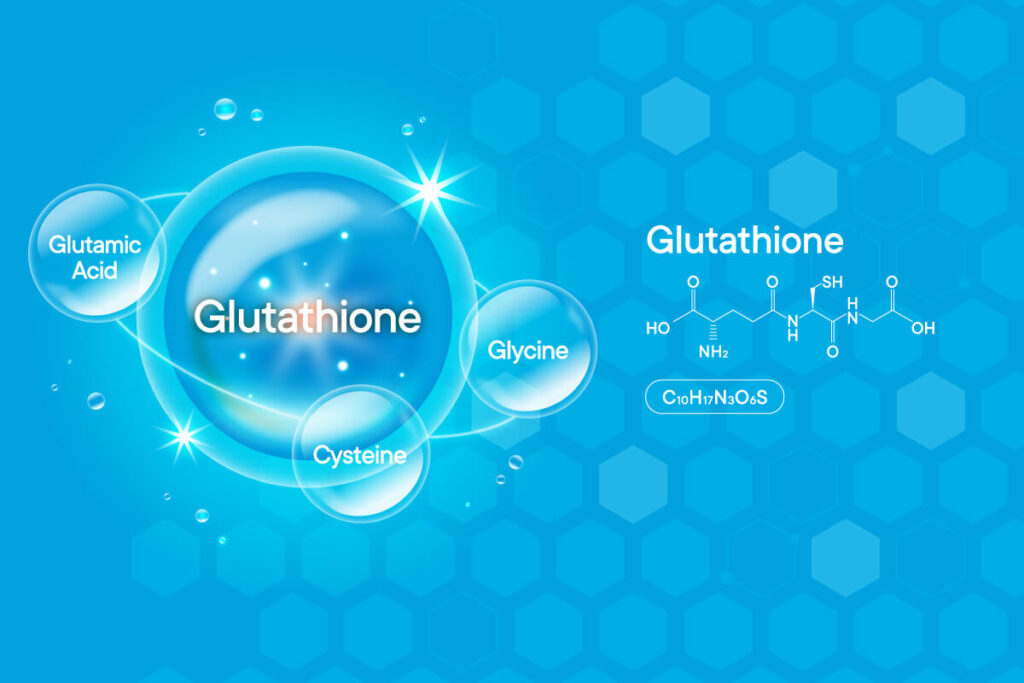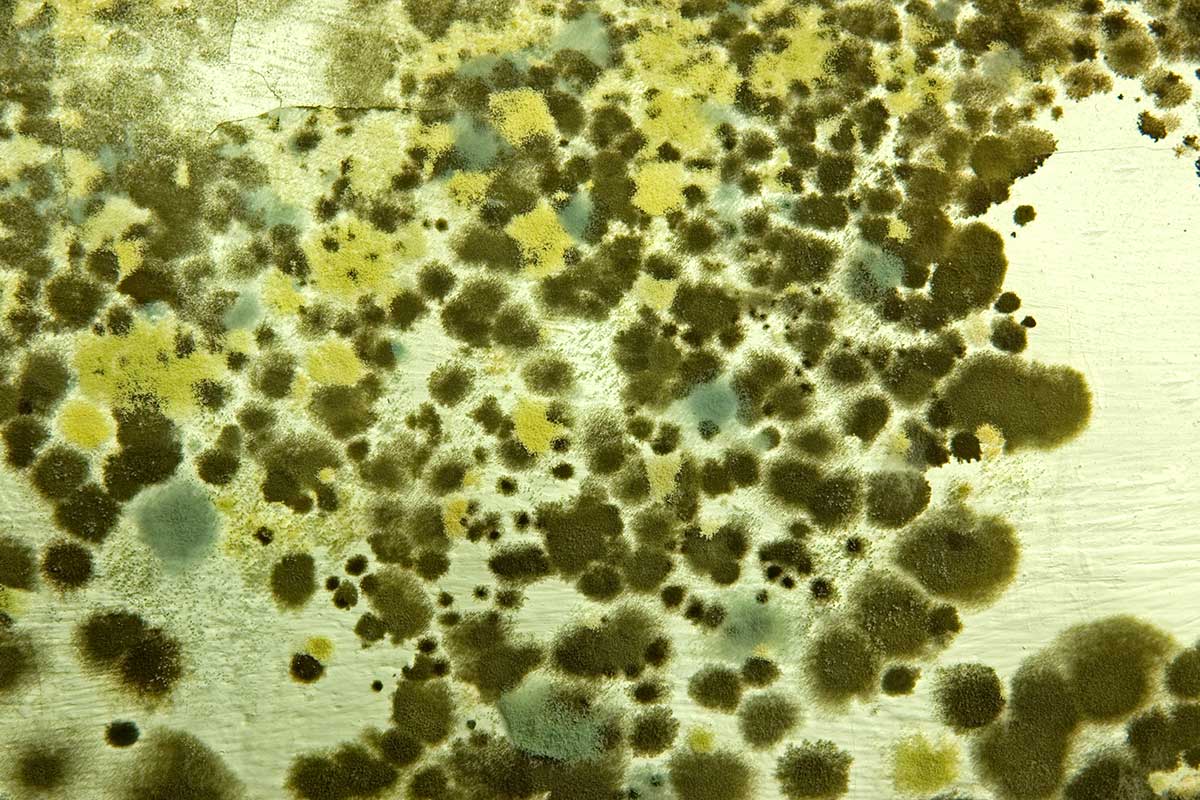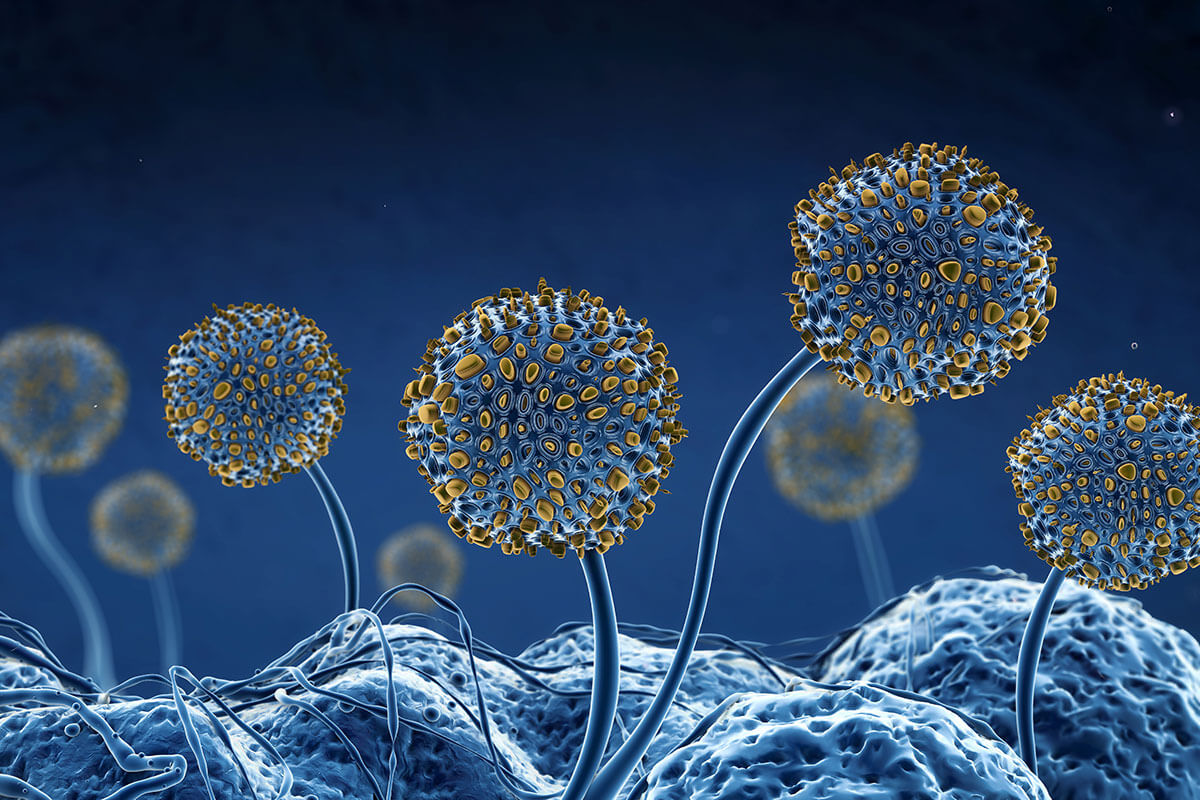Glutathione is the most abundant intracellular antioxidant, playing a crucial role in maintaining our health. It helps protect our mitochondria and cells, detoxifies environmental toxins, and balances our immune system. As the body’s master antioxidant, glutathione recycles other antioxidants and helps repair cellular damage caused by daily exposures to environmental toxins and free radicals caused by chronic infections. For people dealing with chronic illness, supporting healthy glutathione levels is essential for healing and recovery.

Genetics Influence Glutathione Production
The body’s ability to make and recycle glutathione depends on several key genes. Glutathione synthetase (GSS) is involved in the final step of glutathione production, while glutathione peroxidases (GPXs) help use it to neutralize harmful reactive oxygen species. The glutathione S-transferase (GST) family helps attach glutathione to toxins so they can be safely cleared from the body.
Any variants in these genes can reduce the body’s ability to remove harmful substances and protect against cellular damage.
The Nrf2-Keap1 pathway is another key regulator, turning on genes that drive glutathione production and detoxification. While NAC (N-acetylcysteine) is sometimes used to boost glutathione, people with genetic polymorphisms in cysteine metabolism do not effectively convert it into glutathione.
Glutathione and Inflammation
Cytokines, such as TNF-α, IL-1β, and IL-6, are produced by immune cells and play a significant role in driving inflammation and triggering oxidative stress. When glutathione levels are healthy, it helps neutralize this oxidative stress and calms the inflammatory response. It also helps protect mitochondria and reduces damage caused by chronic inflammation. A 2024 review article highlights how antioxidants, such as glutathione, can break the cycle of inflammation and oxidative stress, thereby helping to prevent long-term damage and immune dysfunction.1
Glutathione and Autoimmune Conditions
Glutathione plays a crucial role in maintaining the immune system’s balance. In autoimmune diseases such as lupus, rheumatoid arthritis, and multiple sclerosis, chronic inflammation and oxidative stress can damage tissues and interfere with immune tolerance. Low glutathione levels have been linked to these conditions, as they can disrupt the immune system’s ability to recognize and respond to the body’s own cells. In addition to reducing environmental toxins commonly associated with autoimmune conditions, replenishing glutathione can help regulate immune activity and reduce autoimmune flare-ups.2
Detoxifying Environmental Toxins
Glutathione plays an essential role in detoxifying chemicals, including pesticides and herbicides. These substances can create oxidative stress, harm mitochondria, and even damage DNA. The GST enzymes help neutralize them by attaching glutathione, allowing them to be cleared from the body. According to a review on pesticide toxicity, oxidative damage is a common mechanism by which these chemicals disrupt hormones, damage nerves, and potentially cause cancer. People with low glutathione levels or those with less efficient detoxification genes are at a higher risk of developing the associated diseases.
Pesticides such as organophosphates and carbamates have been shown to lower glutathione in tissues, leaving cells more vulnerable. Using intravenous or oral liposomal glutathione can help replenish levels and support detox pathways. This is especially important for those with genetic polymorphisms in glutathione genes.
Heavy Metals: Mercury, Lead, and Oxidative Damage
Toxic metals, such as mercury and lead, can cause significant damage to mitochondrial health and cellular function. They block key enzymes, disrupt antioxidant systems, and generate free radicals. Glutathione helps reduce heavy metal levels by facilitating their removal from the body, primarily through the liver. Mercury, in particular, depletes glutathione reserves and weakens glutathione-dependent enzymes.
Low glutathione makes it harder for the body to deal with metal toxicity, worsening symptoms like fatigue, neuropathy, and immune dysfunction. Individuals with certain gene variants may have a more challenging time eliminating these metals, making glutathione support crucial for recovery.
Mold Exposure and Mycotoxins: A Unique Challenge
Mycotoxins are toxic substances released by molds like Aspergillus, Penicillium, and Stachybotrys found in water-damaged buildings. These toxins cause oxidative stress and can damage DNA, mitochondria, and cell membranes. A review in Toxins notes that glutathione depletion is a significant factor in how mycotoxins cause illness.3
Typically, the body uses glutathione—primarily through GST enzymes—to make mycotoxins water-soluble for elimination. However, some mycotoxins suppress glutathione production. This can leave people stuck in a state of chronic illness, with symptoms like fatigue, brain fog, inflammation, and immune issues. Restoring glutathione levels is pivotal to turning things around.
The Role of Glutathione in Mycotoxin Illness Recovery
People suffering from mold-related illness often don’t respond to conventional treatments. That’s because these toxins disrupt redox balance and block normal detox pathways. Glutathione helps not just with removing toxins but also with protecting mitochondria, stabilizing cell membranes, and supporting immune repair.
Replenishing glutathione levels through oral liposomal and IV administration accelerates recovery, particularly in patients with genetic variations that impair glutathione production. Nutrients that support Nrf2 activation, like sulforaphane or curcumin, can also help boost the body’s glutathione-making capacity.
What is the Best Form of Glutathione?
Glutathione is not well absorbed orally. However, intravenous glutathione is best absorbed since it is delivered directly to the bloodstream. It is not practical to receive IV glutathione daily, and some people do not have access to IV glutathione at all. Over the years, researchers and scientists have developed oral delivery methods that increase oral absorption of glutathione. Research has shown that a liposomal form of glutathione that can be held under the tongue for sublingual absorption is an effective delivery method that increases blood levels of glutathione. The same highly absorbable glutathione used in this research study is the one I used in Glutathione Protect.
Conclusion
Glutathione is one of the most important molecules for protecting your health. It is critical for detoxification, immune balance, inflammation control, and recovery from toxic and infectious exposures. Many people with chronic illnesses have low glutathione levels, and some have genetic variants that affect their ability to produce or recycle it. The most harmful scenario is having gene variants that reduce glutathione levels and high toxin levels that deplete glutathione. From autoimmune conditions and inflammation to mold and heavy metal toxicity, supporting healthy glutathione levels can significantly improve outcomes. For anyone managing a complex chronic illness, supporting glutathione should be a top priority.



